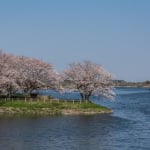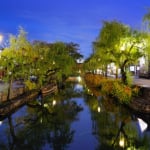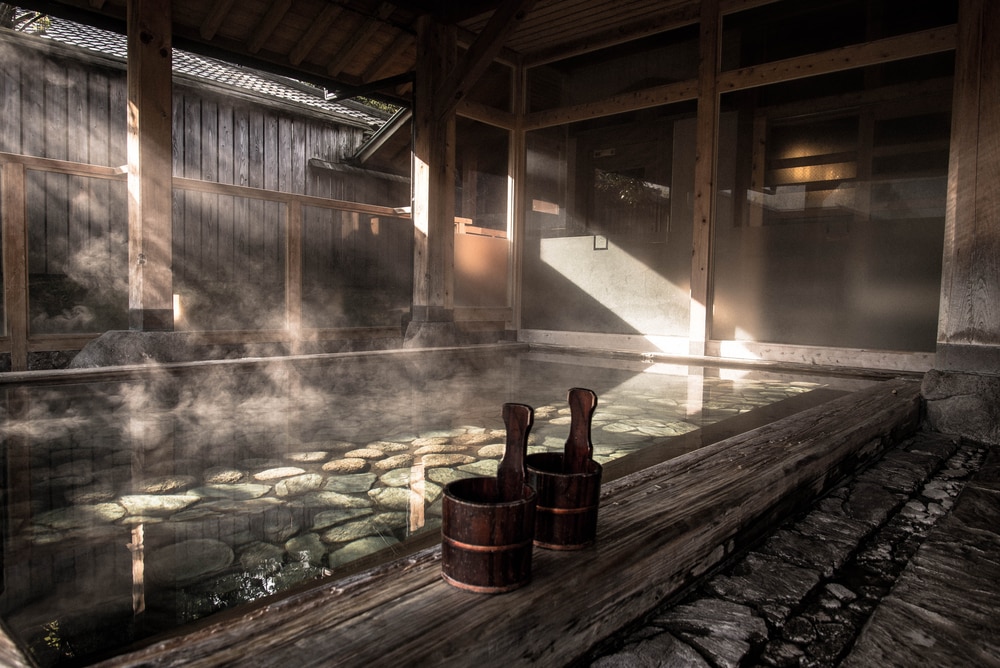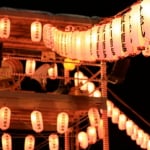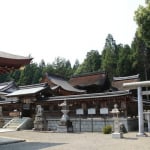Photo by dryadphotos/Shutterstock
Japanese Hot Spring Etiquette: A Guide to Visiting an Onsen
Visiting an onsen, or Japanese hot spring, can be a bit intimidating if you’re not familiar with the process. The idea of undressing in front of strangers, figuring out the right way to use the baths, and wondering about hygiene can make it seem a little overwhelming. Here’s a simple guide to help you navigate the experience, understand the etiquette, and see how these places stay so clean. With this info, we hope you’ll feel more at ease and ready to enjoy this wonderful Japanese tradition, which we definitely think is worth trying at least once.
table of contents
[x] close
Japanese Hot Spring Etiquette: A Guide to Visiting an Onsen
Do You Have to Be Naked?

Photo by Imagine Photographer/Shutterstock
Generally speaking, almost no onsen will allow visitors to enter the baths wearing garments, this includes swimwear. The main reason for this is to try and keep the water as clean as possible, and wearing any type of clothing is not seen as being conducive to that. However, don't let this deter you from this unique and unforgettable experience. Everyone else has to get naked as well, and like you, are there with the intent to relax and soak in the beneficial, mineral-rich waters, and not to gawk and stare. Additionally, a small towel is almost always provided. If you like you can use this as a small cover as you navigate from place to place, or alternatively, some onsen can be reserved for private use, although these tend to be a little pricier.
What's the Procedure When Using the Baths?

Photo by Benoist/Shutterstock
When you arrive at the onsen, you'll usually be given two towels: a large one for drying off after your soak and a small one for washing. Keep the large towel in the locker area and bring the small one with you into the bathing area.
Before you get into the bath, you need to wash thoroughly at the nearby showers. This is all about keeping things hygienic, and you'll often find a stool, shampoo, conditioner, and soap provided. In Japan, people typically sit on the stool while they wash. After you’re clean and in the bath, you can just relax and enjoy. Whether you choose to rinse off before getting dressed is totally up to you.
Regarding Tattoos
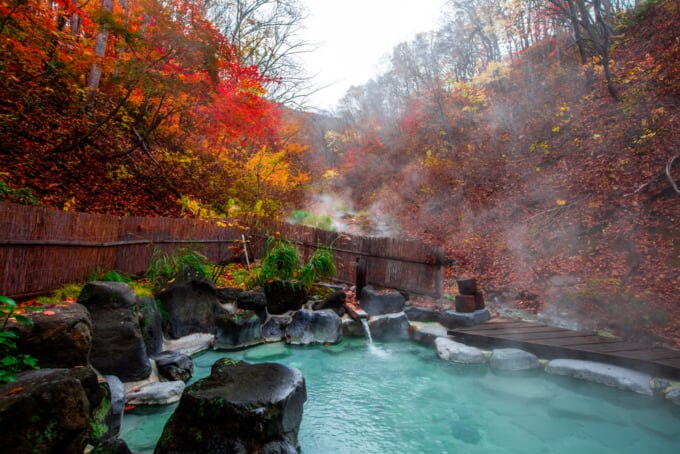
Photo by Dpongvit/shutterstock
In Japan, tattoos have historically been linked with organized crime, so many places like gyms, swimming pools, and onsens have rules that restrict tattooed individuals from using their facilities. However, there are a few ways to work around this. Some places offer private-use baths, or you might be able to cover smaller tattoos with bandages. Fortunately, with the rise in international tourism, more and more onsen are becoming tattoo-friendly. You can find these by checking with tourist information centers or doing a quick online search.
Things You Mustn't Do At an Onsen
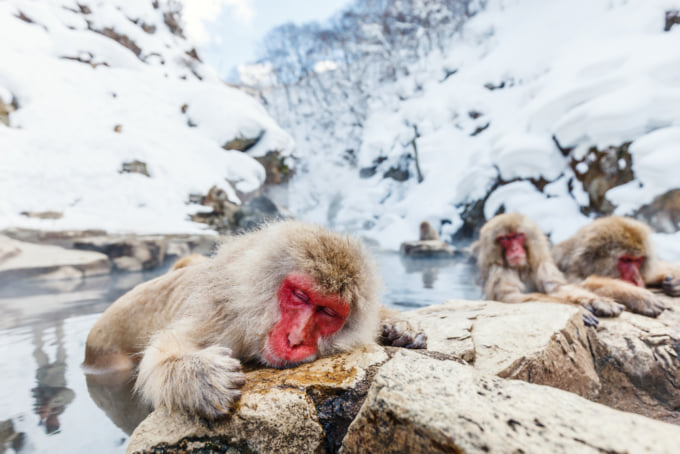
Photo by BlueOrange Studio/Shutterstock
When visiting an onsen, it's important to keep a few things in mind. Getting drunk, taking pictures inside the baths, and engaging in vigorous activities like yelling, splashing, or running are generally not allowed. These rules help maintain hygiene, safety, and a relaxing atmosphere for everyone. Also, since baths are usually separated by gender, remember that blue is typically for men and red is for women. If you're not familiar with Japanese characters, keep this in mind to avoid walking into the wrong section. Many onsens cater primarily to locals, so English signage might not be very clear.
Are the Baths Hygienic?
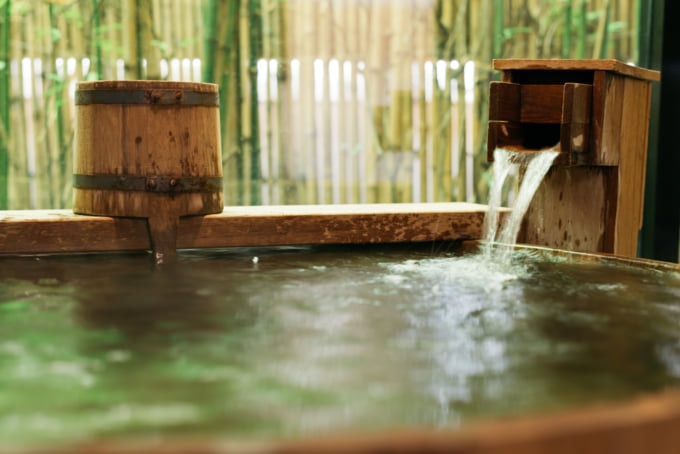
Photo by Bhakpong/Shutterstock
It's perfectly normal to worry about cleanliness when it comes to onsen baths. However, there's no need to be concerned. Onsen facilities take hygiene very seriously. They enforce strict rules, such as no clothing in the baths and requiring visitors to wash thoroughly before entering. Additionally, the baths are regularly drained and cleaned. The water is also kept flowing continuously and is generally very hot, which helps maintain its cleanliness and safety. So you can relax and enjoy your soak with confidence.
Conclusion
One of the leading reasons for tourists - both local and international - to visit the countrysides of Japan, is for the unique, authentic and therapeutic onsen experience. With approximately 3000 hot spring resorts dotted around the country, there is no shortage of baths to chose from: outdoors, indoors, piping hot, tepid, private, public, differing in mineral content and pH, enclosed in nature or built into a pleasantly fragrant, steaming and dimly lit, tiled room. It would be a shame to visit Japan and not spend a day or two soaking in the relaxing, refreshing and healing properties of these waters which have been enjoyed by Japanese for these very same reasons for hundreds of years.
